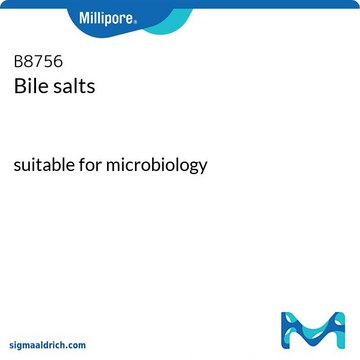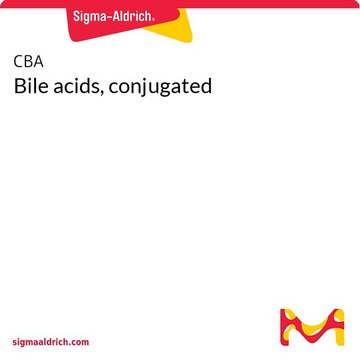B8631
Bile extract porcine
Synonym(s):
Bile acids, Hog Bile Powder
About This Item
Recommended Products
Application
- as a supplement in brain heart infusion (BHI) medium to culture Listeria monocytogenes LO28
- to investigate the survival of probiotic bacteria through the gastric-small intestine
- as a supplement in BHI mediato study the effect of oxygen on bile resistance in Listeria monocytogenes
Biochem/physiol Actions
Quality
Testing Method
Storage Class Code
11 - Combustible Solids
WGK
WGK 3
Flash Point(F)
Not applicable
Flash Point(C)
Not applicable
Personal Protective Equipment
Regulatory Listings
Regulatory Listings are mainly provided for chemical products. Only limited information can be provided here for non-chemical products. No entry means none of the components are listed. It is the user’s obligation to ensure the safe and legal use of the product.
JAN Code
B8631-100G:
B8631-500G:
B8631-VAR:
B8631-1KG:
B8631-BULK:
Certificates of Analysis (COA)
Search for Certificates of Analysis (COA) by entering the products Lot/Batch Number. Lot and Batch Numbers can be found on a product’s label following the words ‘Lot’ or ‘Batch’.
Already Own This Product?
Find documentation for the products that you have recently purchased in the Document Library.
Customers Also Viewed
Our team of scientists has experience in all areas of research including Life Science, Material Science, Chemical Synthesis, Chromatography, Analytical and many others.
Contact Technical Service











